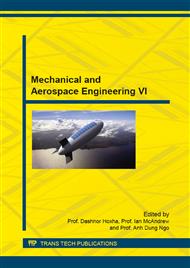p.249
p.256
p.261
p.266
p.271
p.276
p.282
p.287
p.292
Tool Condition Monitoring Using the Electromotive Force from the Chip-Tool Thermocouple
Abstract:
Tool condition monitoring systems are extensively study. However, the machining processes are non-stationary and comprise many details that interfere in its monitoring. Aiming to develop a simple, low cost and efficient tool condition monitoring system, this study analyzed the electromotive force (EMF) from a chip-tool thermocouple in turning tests with AISI 1045. Since EMF comprises time and frequency variations related to machining conditions a Wavelet Packet Transform extracted the signals features from EMF. These signals features fed inputs of a neural network that aimed to evaluate the cutting tool maximum flank wear. The maximum error of the neural network was 1.88% for tested signals. Moreover, EMF showed changes that allow the detection of cutting tool breakage. Therefore, the chip-tool thermocouple may be a promising method for tool condition monitoring. This is the first report of electromotive force analysis in time-frequency domain aiming to quantify the wear of the cutting tool and evaluate its condition.
Info:
Periodical:
Pages:
271-275
Citation:
Online since:
October 2015
Price:
Сopyright:
© 2015 Trans Tech Publications Ltd. All Rights Reserved
Share:
Citation:


